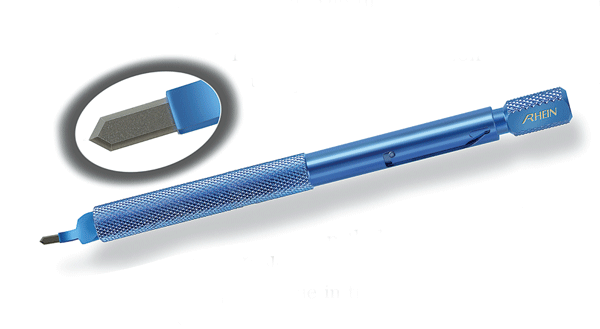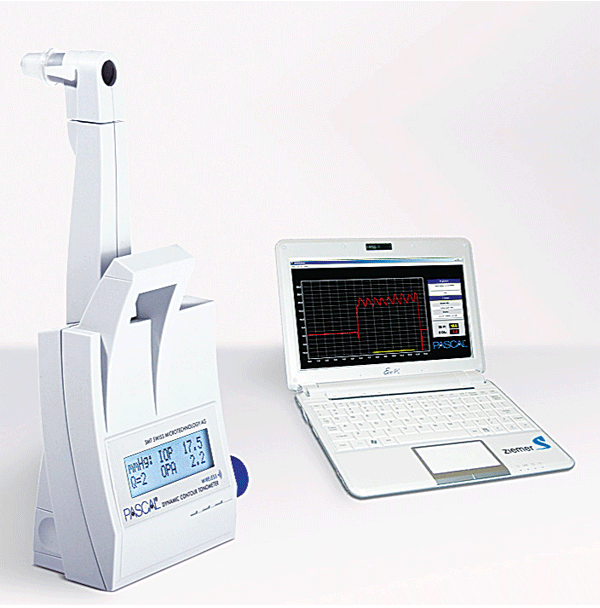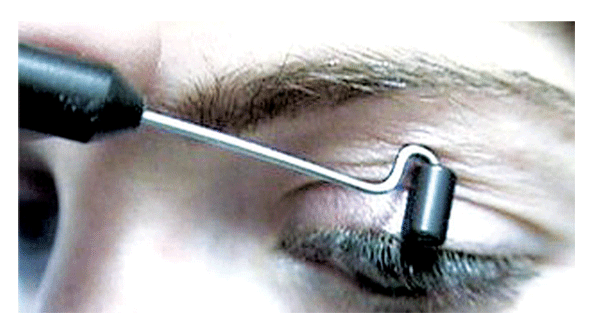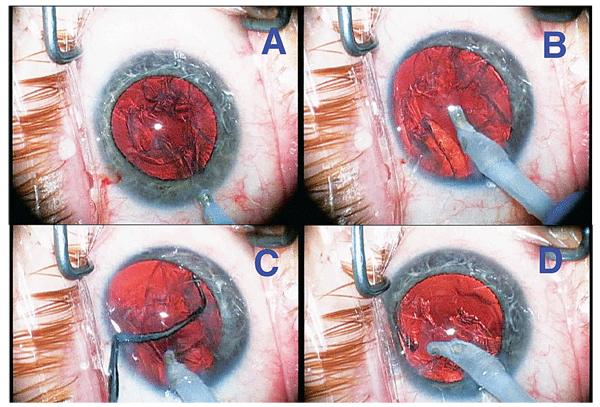Rhein Medical offers two new diamond knives designed to facilitate the new Stellaris incision requirement. The knives are 1.8 mm in width and render an extremely sharp incision. The first knife (05-5102 3-D Blade, Angled Handle, 1.8 mm Blade) renders a unique incision that provides a more tortuous path, helping to seal the incision. It also has asymmetrical bevels causing it to push tissue in three directions. The second knife, (05-9025 Clear Cornea 1.8 mm Sharp on the Side CVD Diamond) has anterior bevels, and is a unique black diamond. This is a more economical blade, which offers a very clean incision. Contact Rhein Medical at (813) 885-5050 for more information.

Pascal Dynamic Contour Tonometer Is Now Medicare-Billable
Ziemer Ophthalmic Systems reports that its Pascal Dynamic Contour Tonometer has been assigned a Category III CPT code (0198T, measurement of ocular blood flow by repetitive intraocular pressure sampling, with interpretation and report), effective January 1, 2009. Measuring the ocular pressure curve with the Pascal DCT is therefore now a billable procedure.
To make documenting the measurement easy, Ziemer has created the Pascal RTS Recording Tonometer System. It combines the proven Pascal Dynamic Contour Tonometer with an elegant sub-notebook PC. The PC receives Pascal data over a Bluetooth link and generates a diagnostic report that can be appended to the patient's electronic medical record and serves to document the procedure for billing purposes. Dynamic contour tonometry is a novel measuring technique, which was designed to more accurately measure IOP, largely independent of the cornea's thickness, curvature or biomechanical properties.

In vitro and in vivo invasive studies have demonstrated a nearly linear relationship of DCT to manometric IOP, independent of corneal thickness or curvature. Additionally, DCT values have been shown to remain unchanged in individuals before and after LASIK surgery. Visit ziemergroup.com or call 1 (866) 708-4490.
Meibomian Gland Expressor Kit Quickly and Gently Helps Bring Relief
Gulden Ophthalmics has introduced its MG Expressor Kit, which helps bring relief to patients with meibomian gland dysfunction. The kit includes gel masks, an ergonomic expressor tool and disposable expressor tool covers. In use, the warmed gel mask is positioned over the patient's eyelids to help liquefy the meibomian gland contents. Then the MG Expressor tool is gently rolled over the eyelids and eyelid margins to help non-invasively express and decongest the meibomian glands. In just minutes, the doctor or a staff technician overseen by the doctor can accomplish the treatment, providing rapid relief to the patient. There is no need for topical anesthetics or cotton tip applicators, and the procedure can be easily performed with or without a slit lamp.

The kit contains two gel masks that can be easily cleaned and sanitized, the expressor tool, and a package of replaceable expressor tool covers. Additional covers can be ordered separately. Contact Gulden Ophthalmic at (215) 884-8105 or visit guldenophthalmics.com.
New Websites Spotlight Bausch & Lomb Surgical
Bausch & Lomb has introduced two new websites focused on the surgical instruments business. The Bausch & Lomb Storz ophthalmic instruments site is now located at storz eye.com. The B&L instruments site designed for the ear, nose, throat and plastic surgery markets is located at bauschinstruments.com. For enhanced convenience, both websites enable customers to easily navigate between the ophthalmic, ENT and plastics portfolios, selecting items from both lines to receive one online quote. In addition, customers will experience improved navigation and updated content, providing a quick and convenient channel for fulfilling their ophthalmic, ENT and plastic surgery instruments needs.
These sites will continue to serve as the leading resource for product information, quotes, continuing education opportunities and more. Customers are encouraged to register on the new sites to receive the latest B&L updates and information.
Pearls from the Deep
Countering Reverse Pupillary Block
When doing cataract surgery in a high myope, there is a tendency for the anterior chamber to become overly deep and the iris and capsular bag to be pushed forward. This is due to a reverse pupillary block and can be resolved by simply balancing the pressure between the anterior and posterior chamber by using your chopper to tent up the iris.
Alternatively, a single nasal iris hook can be placed at the beginning of the case to avoid the issue all together.



